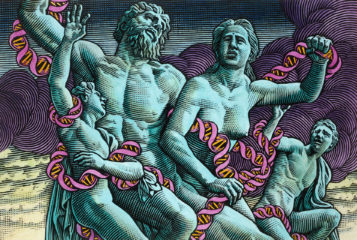Regulations to legalise and govern the use of mitochondrial donation techniques have been laid down before the UK Parliament.
Mitochondrial donation techniques are being developed by researchers at Newcastle University and elsewhere as a means to prevent the transmission of mitochondrial disease. The techniques involve removing the nuclear material from an affected egg and inserting it into a healthy donor egg. The donor egg only contributes healthy mitochondria as its nuclear material has been removed.
Children born from mitochondrial donation will inherit nuclear DNA from both parents, but will also have a small genetic contribution from the donor since the mitochondria carry their own mitochondrial DNA (mtDNA).
Fertility clinics are not yet able to offer mitochondrial donation procedures under the current law. However, public health minister Jane Ellison says that 'the Government considers that the time is now right to give Parliament the opportunity to consider and vote on these regulations'.
A debate and vote on the draft regulations is expected to take place before the general election in May 2015. If the regulations are approved, the new law will come into effect in October 2015 and would make the UK the first country in the world to legislate for mitochondrial donation.
Since its first announcement, mitochondrial donation has received criticism from some saying it is unethical (see BioNews 439970 and 442199). However, the move to legislate for mitochondrial donation has support from many scientists and charities.
The Chief Medical Officer, Professor Dame Sally Davies, said: 'Mitochondrial donation will give women who carry severe mitochondrial disease the opportunity to have children without passing on devastating genetic disorders. It will also keep the UK at the forefront of scientific development in this area.'
Robert Meadowcroft, chief executive of the Muscular Dystrophy Campaign, added: 'Today's news is an important milestone for families affected by mitochondrial disease. We believe that this technique could open up the possibility of motherhood untainted by the fear of passing on a painful, debilitating condition to their future children.'
The draft regulations state that fertility clinics will require a new licence to offer the techniques. They also state that it will be up to the Human Fertilisation and Embryology Authority to decide whether a treatment can go ahead on a case-by-case basis. Under the proposed regulations, children born from mitochondrial donation will have no right to identifying information about the mitochondrial donor.
This contrasts with rules that allow children born from egg, sperm and embryo donation to access identifying information on donors when they turn 18. Although mtDNA only contributes a small percentage of a child's genetic material, some critics are concerned about the impact of children not knowing who their mitochondrial donor is.
Philippa Taylor, of the Christian Medical Fellowship, told the Daily Mail, 'A child must have the right to identify and know who his or her three genetic parents are, if they choose.'
'This is already granted to children who are adopted because we understand how important it is for children to know about their genetic heritage for their sense of identity and self-understanding. It should not be denied to these children,' she added.
Despite these concerns Professor Doug Turnbull from Newcastle University, one of the pioneers of mitochondrial donation, told BBC News: 'I'm delighted that it's being moved forward to the next stage. It's a long process but it's great news.'
'We want to apply for a licence next year and hope to do it [the procedure] in 2015.'
Sources and References
-
Rules for babies 'from three people'
-
WorldÔÇÖs first ÔÇÿthree-parentÔÇÖ babies could be born in the UK
-
Third parent in IVF cases will not be named: Britain to allow triple-donor embryos to halt genetic diseases in world first - but extra mother's identity will be kept secret
-
Three parent babies given green light by government






Leave a Reply
You must be logged in to post a comment.